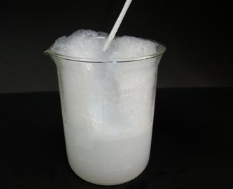Update:Self-made paint pastes are water-based pastes for textile printing. ZHEJIANG RUICO ADVANCED MATERIALS CO., LTD. will exp...
a. Synthetic fiber fabrics: such as polyester, nylon, polypropylene, etc., or blends with a high proportion of synthetic fibers. Synthetic fiber: The fabric is a hydrophobic substance, and the water-based slurry of the coating used for printing cotton fabrics is easy to permeate and smear. When printing synthetic fabrics, thick emulsified paste should be used when mixing the pulp to avoid dilution with water. If it must be diluted, it should be diluted with a thin emulsified paste. Do not dilute directly with water.
b. The humidity in the air is too high, such as long-term rainy weather in the south, less or no water should be added when mixing the pulp.
c. Cotton fabric is a natural cellulose fiber fabric, which is a hydrophilic substance. Generally not easy to permeate. However, if the capillary effect is too high, it will also lead to osmosis. So the appropriate capillary effect is controlled at around 7-200px. Before feeding, it is crucial to ask the manufacturer's technical indicators. If the capillary effect is too low, it will not be printed, and if the capillary effect is too high, it will cause permeation.
d. Some enterprises use emulsified paste as thickener, commonly known as A-gang paste. It is emulsified with white kerosene, peregrine and synthetic dragon glue under high-speed stirring. If the A-gang pulp has quality problems and is not fully emulsified, there will be "oil circles" after printing, which will easily lead to misunderstandings of "bleeding" or "watermarks".
Therefore, good quality A-gang pulp should be used or a synthetic thickener should be used to overcome the occurrence of "oil ring".
e. There are many comprehensive factors that cause "seepage" and "bleeding", such as the texture of the texture is too thin, too thin, too light; the pattern area is too large; the mesh number is too low; the pressure during operation is too large; Does not correspond to the pattern, the amount of sizing is too large and so on.
In addition, the countertop also has a lot to do. If you use glass or plastic veneer with a very smooth hard surface, it will also cause seepage of the pallet. The outline is not clear, but should be changed to a flexible soft countertop.

